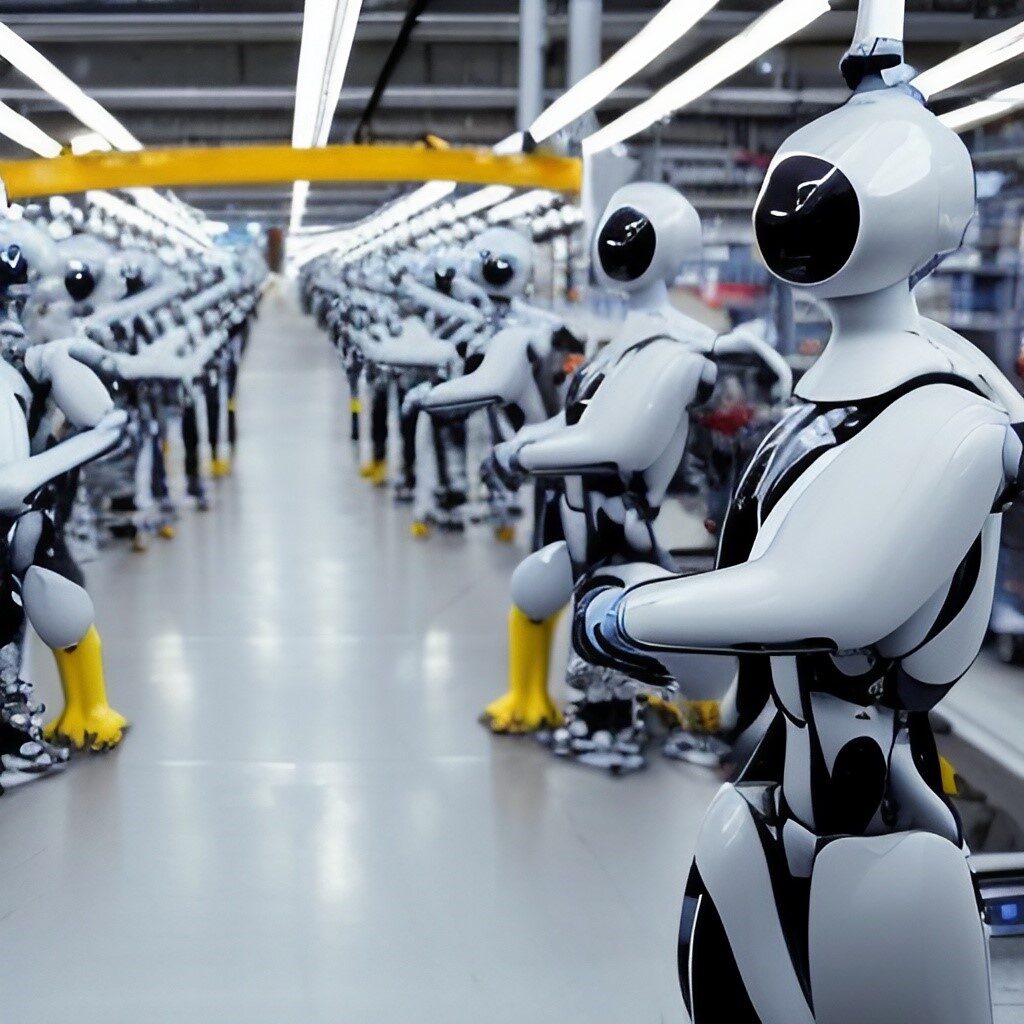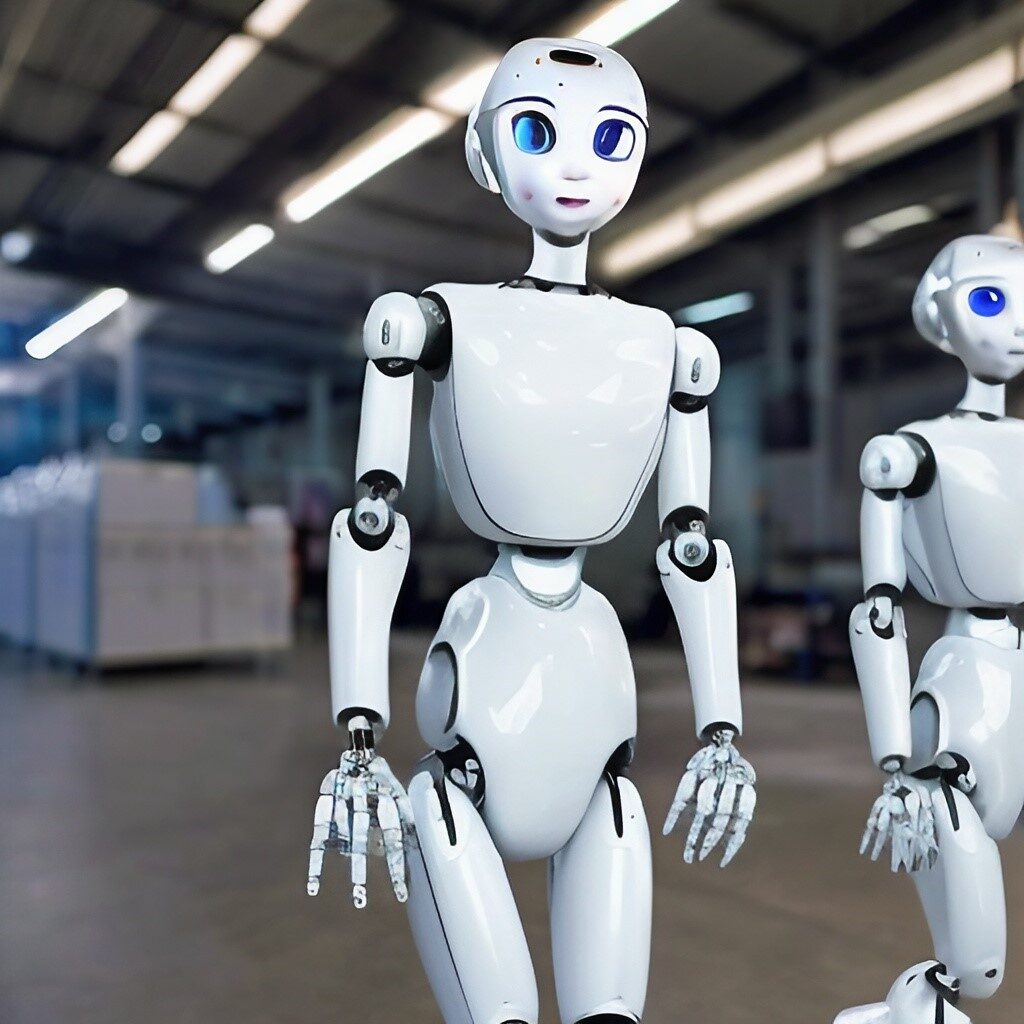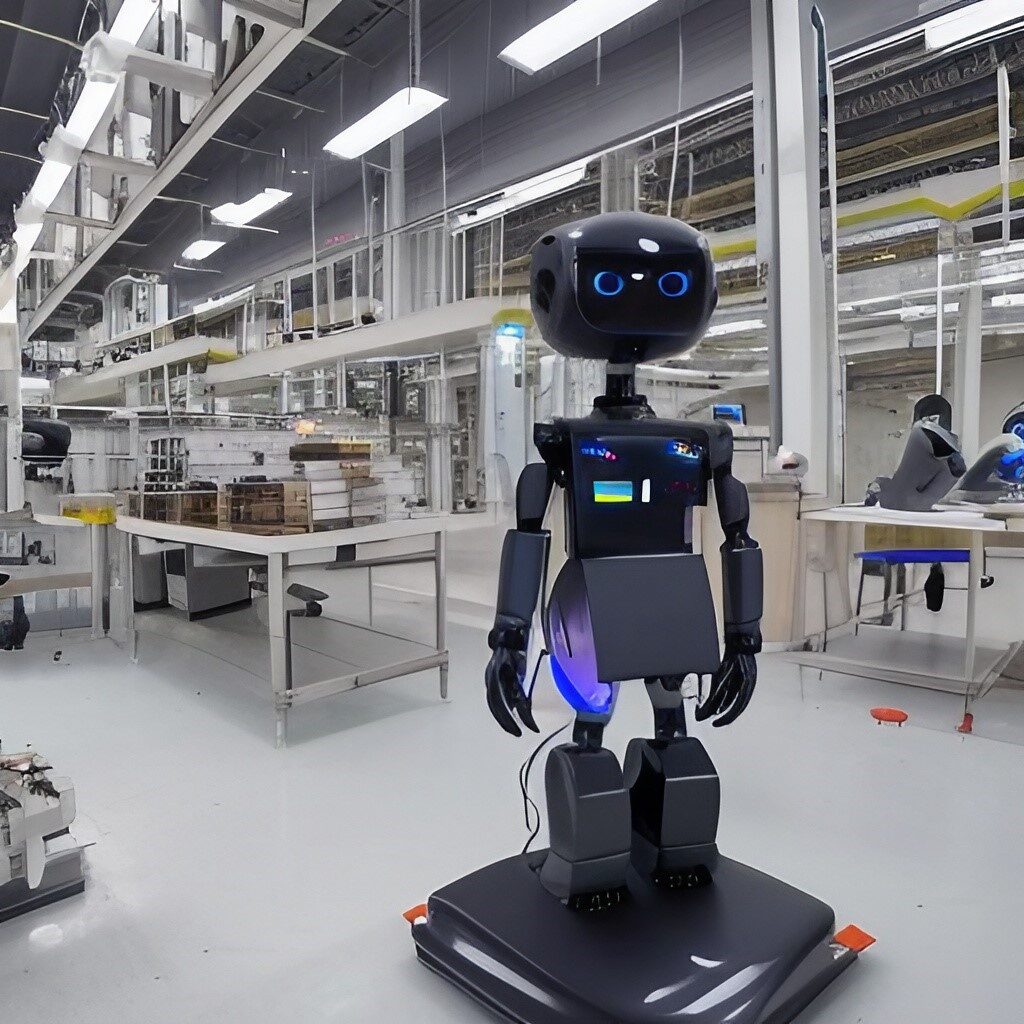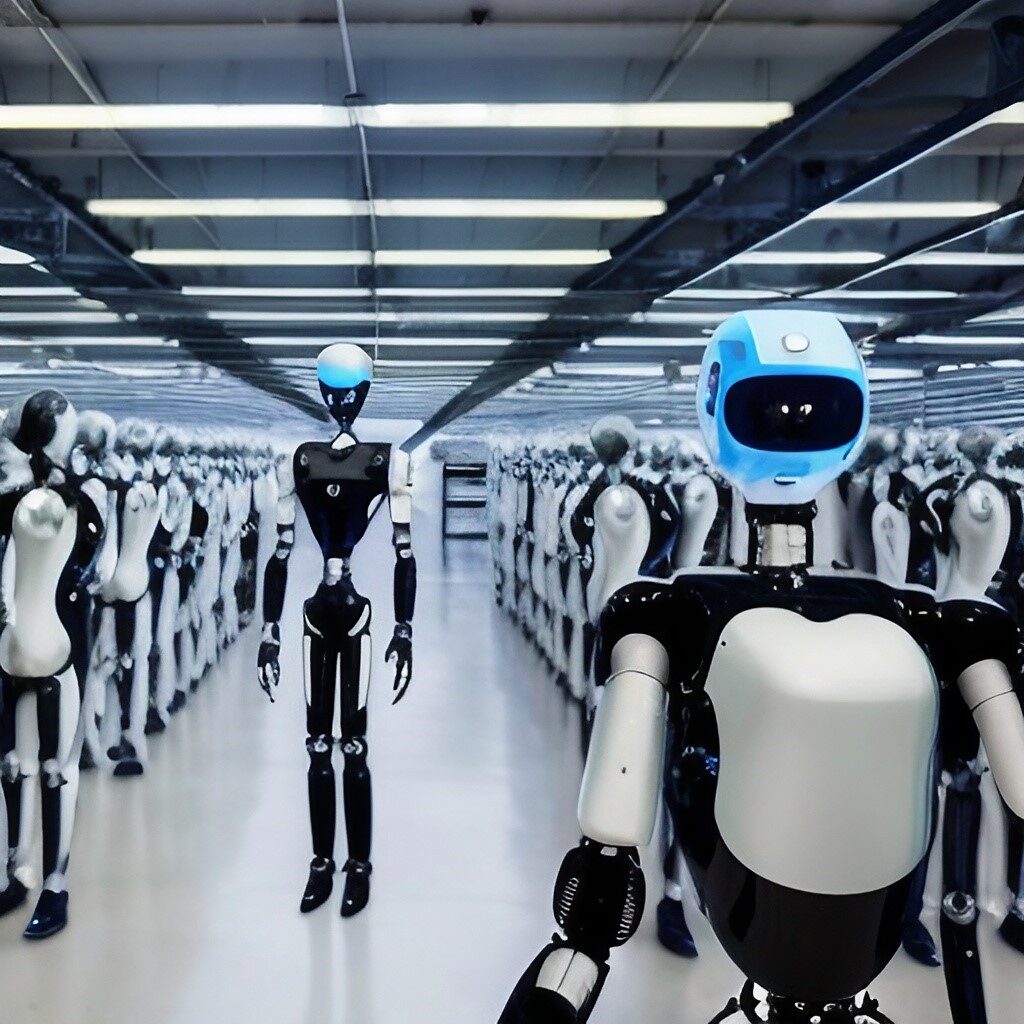Can an AI create another AI?
It’s a question that has been around for decades, and all signs point to the answer being a resounding yes. But how is that possible? How can something as complex as artificial intelligence be created by something seemingly so simple?
Well, it’s complicated but let’s dive in and see if we can figure out how this could be possible.
Can an AI Create Another AI?
Artificial Intelligence (AI) has made great strides in recent years, and many are wondering if another AI can be created using the same technology as the first. It’s a question that scientists and entrepreneurs alike are asking, and one that has yielded some fascinating answers. I’ll explain more on this interesting question.
AI and Machine Learning have made it possible to automate a wide range of processes, from facial recognition to autonomous driving. But can an AI actually create an AI? That is the question. You’re about to find out how its possible…
The short answer is yes an AI is capable of creating another AI – or self replicating!
While it might seem impossible, AI can actually eventually create its own copies of itself. This will be possible due to the “machine learning” process. Machine learning algorithms enable machines to learn from data without being explicitly programmed. This means that AI machines can develop their own understanding of the world around them by processing vast amounts of data.
This process leads to the creation of AI-generated models which can then be used to generate new versions of themselves. For example, one popular form of machine learning is deep learning, where neural networks are used to mimic the brain’s ability to recognize patterns and make decisions based on those patterns. Deep learning models can be trained on large datasets and then used to generate new models that are similar but not exactly the same as their predecessors.
So how does all this relate to creating an AI?
Well, when a deep learning model is trained on data, it will generate a set of parameters which define its behavior and capability. These parameters can then be combined with other parameters from different datasets or other AI models in order to create a new model with different capabilities or behaviors than its predecessor. This process could potentially lead to the creation of an entirely new AI-generated model that is able to perform tasks beyond what its original creators intended for it.

The Basics of Artificial Intelligence (AI)
First off, let’s make sure everyone is on the same page when it comes to artificial intelligence (AI).
In short, AI is a computer system that mimics human behavior by performing tasks such as analyzing data, recognizing patterns, making decisions, solving problems, and learning from past experiences. It takes your commands and runs with them to complete various tasks.
Now, with the basics out of the way, I’ll get back to our original question: can an AI create another AI?
While it is possible, not without some help from humans first. Before an AI can be created it needs to be programmed — and this programming needs to be done by humans. Once programmed correctly an AI can then use its given skillset to create other AIs based on those instructions. So while technically speaking “yes” an AI can create another AI — it still requires human intervention first in order to do so.
Another important element here is machine learning (ML). This term refers to the process of teaching computer systems how to learn from their own mistakes in order for them to gain knowledge and skills over time. Through ML algorithms and data sets AIs are able to “learn” from their mistakes in order for them to improve their performance in whatever task they are set out to accomplish — including creating more AIs.
Before this happens on on a level with super-intelligent AIs self replicating themselves, we must first achieve artificial general intelligence which is still years away.
About 50% of AI researchers and data scientists believe that general AI will emerge by 2060 according to one article published on bigthink.com. Link in the FAQ for more information on these statistics.
Understanding Artificial General Intelligence (AGI)
Artificial General Intelligence (AGI) is the concept of creating a machine that is capable of learning and understanding any task that a human can. AGIs are advanced forms of artificial intelligence systems that can think, learn, and act like humans do. It is an ambitious goal of AI research to create machines that are able to think and operate at the same level as humans.
How Artificial General Intelligence Works
Artificial general intelligence involves leveraging complex algorithms to enable machines to learn more like humans do. These ML & DL algorithms allow machines to process information more efficiently and quickly. They also make it possible for machines to develop understanding about their environment and interact with people in a natural way. Additionally, AGIs utilize deep learning and neural networks, which allow them to process large amounts of data quickly and accurately. This helps them make decisions faster than humans can.
The Benefits of AGI Are Immense
The potential benefits of artificial general intelligence are far-reaching.
For instance, AGIs could be used to improve healthcare outcomes by helping medical professionals diagnose diseases more accurately or even prevent certain diseases from occurring in the first place. In addition, AGIs could be used for robotics applications in manufacturing or transportation systems where they could help automate simple & repetitive tasks and reduce human labor costs significantly. AGIs could also be used for other areas such as finance or logistics where they could help optimize processes and increase efficiency levels dramatically.
Artificial general intelligence (AGI) is an ambitious goal in AI research that seeks to create machines capable of thinking, learning, and acting in the same way as human beings. To achieve this goal, incredibly complicated algorithms are being developed that enable machines to process information quickly and accurately while also developing an understanding about their environment and interacting with people naturally. The potential benefits associated with AGIs have the potential to revolutionize many industries by automating business tasks, increasing efficiency, improving healthcare outcomes significantly, and so much more!
As such, AGI should be viewed as one of the most exciting developments in AI research today. It could even lead to reaching the level of Superintelligence – which would be a game changer.

What Is Superintelligence?
Superintelligence is the ability of artificially intelligent machines to think faster, better, and more accurately than humans. It uses AI algorithms that are specifically designed for a particular task or application. For example, one algorithm might be used for facial recognition while another may be used for weather forecasting. By combining multiple algorithms together, supercomputers can process large amounts of data quick and with a high degree of accuracy. Super-intelligent machines will be ideal for tackling complex tasks like analyzing large datasets or predicting trends in markets.
What is Required to Achieve Super Intelligence?
Let’s start with what we know. An AI is created when developers provide a computer program with datasets and algorithms that allow it to learn on its own. As the program “learns” it begins to recognize patterns in the data and can then apply those patterns in new situations. This self-learning process is known as Machine Learning, and it is the foundation upon which modern AIs are built.
But can an AI take this process a step further by creating its own algorithms?
In theory, yes – AIs have already been used to design new drugs and even create art. But while they may be able to complete these tasks autonomously, they still require human input in order to do so effectively. For example, if you were trying to create a new drug using an AI you would need to provide it with the chemical makeup of existing drugs so that it could recognize similar patterns in new compounds. Without this human input, there’s no way for the AI to “know” what kind of drug it should be creating or even how best to go about doing so.
So, while AIs may be able to create things autonomously, they still require some human guidance in order for them to do so efficiently and accurately. This means that, for now at least, we shouldn’t expect an AI-created super-intelligent AI anytime soon – but in future the possibilites seem endless. Before an A.I. can create another A.I. the technology needs to first reach a level of Artificial General Intelligence (AGI) and then it can ultimately achieve Artificial Superintelligence (ASI).
Understanding Superintelligence
Artificial Superintelligence (ASI) is an advanced form of machine intelligence that goes beyond what humans can do. It is designed to process and understand data in a more efficient and accurate manner than human brains can. This promising state of artificial intelligence technology has been steadily advancing over the years due to its potential applications, from healthcare to autonomous vehicles. Now I’ll explain more on what superintelligence is and how it works.
How Does Superintelligence Work?
Superintelligence works by analyzing vast amounts of data with the help of sophisticated algorithms. The algorithms are programmed to recognize patterns in the data that may not be obvious to humans, such as correlations between different variables or outliers in the set. Once these patterns are identified, they can then be used by intelligent machines to make decisions or predictions about future events. For example, an AI-powered system could predict stock prices based on historical market trends or detect fraudulent activity based on unusual spending patterns.
The Benefits Of Superintelligence
The benefits of superintelligence are seemingly endless — from reducing human error in decision-making processes to helping us discover new ways of understanding our environment and making more informed decisions about future actions. It also helps us automate tedious tasks such as sorting through large amounts of data quickly and accurately so that we can focus our attention on more meaningful work instead. Additionally, it allows us to utilize the latest technologies faster than ever before so we can stay ahead of our competitors and remain competitive in today’s rapidly-changing landscape.
Progress towards superintelligence has come a long way since the inception of the concept decades ago and continues to advance at a rapid pace thanks to advancements in artificial intelligence technology. As AI software & technology continues to evolve, so too will the rapprochement of superintelligence — eventually enabling us to make better decisions faster than ever before while reducing human error. With its immense potential applications across various industries ranging from business analysis to self driving cars, it’s no wonder why many experts believe superintelligence will revolutionize our world in the near future.

Conclusion on Self Replicating AI:
All in all, it is possible for an AI to self replicate itself using machine learning algorithms such as deep learning neural networks. By training these networks on large datasets, they can generate their own set of parameters which can then be combined with other AI models in order to create a unique version of itself with different capabilities than its predecessor had originally intended for it. This opens up exciting possibilities for further exploration into artificial intelligence and machine learning.
So there you have it — an AI CAN create another AI… but only with a little bit of help from us humans first!
This technology has come a long way since its humble beginnings decades ago and continues to evolve every day. From helping businesses optimize their online presence through SEO techniques all the way up through creating fully functioning robots capable of performing complex tasks — AI business tools have undoubtedly changed the game when it comes modern computing power. I cannot wait to see what other possibilities lie ahead… For now, there are already powerful artificially intelligent tools like impressive text generators available online that are being used by major tech companies like Google, Airbnb, IBM and others.
In conclusion, while artificial intelligence companies have progressed AI technology a long way since its inception, there are still many hurdles that need overcoming before we can expect an AI-created Artificially Intelligent entities anytime soon. While AIs can complete certain tasks autonomously they still need human input in order for them to do so efficiently and accurately – something that will remain true until such time as AIs become more advanced than their human counterparts. Until then, humans will continue playing a pivotal role when it comes to developing new technologies powered by artificial intelligence.
